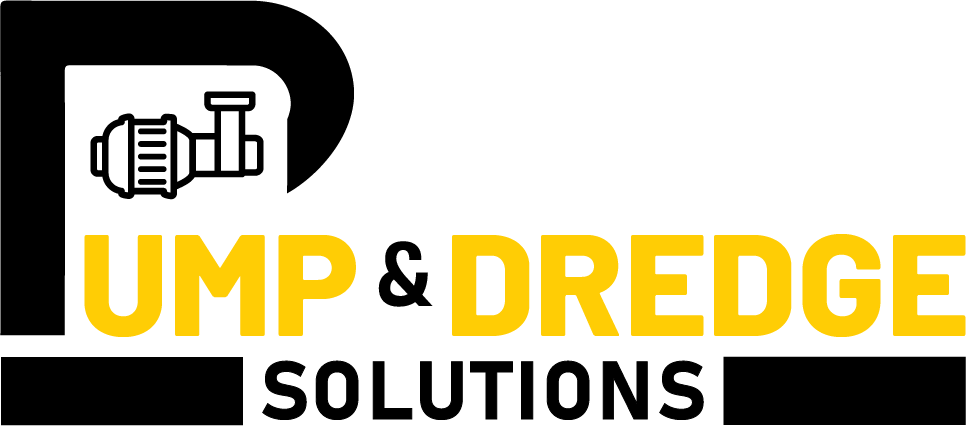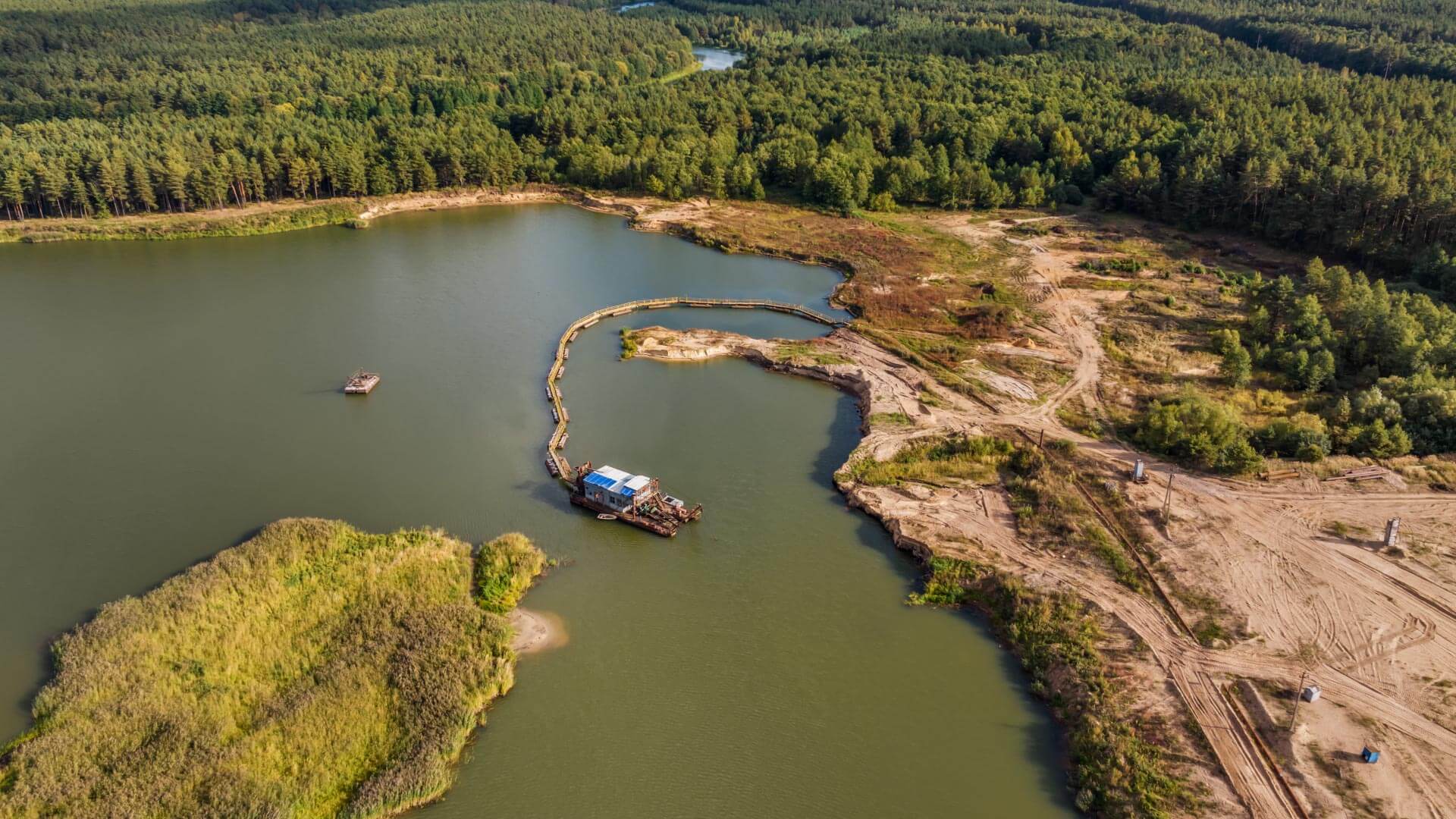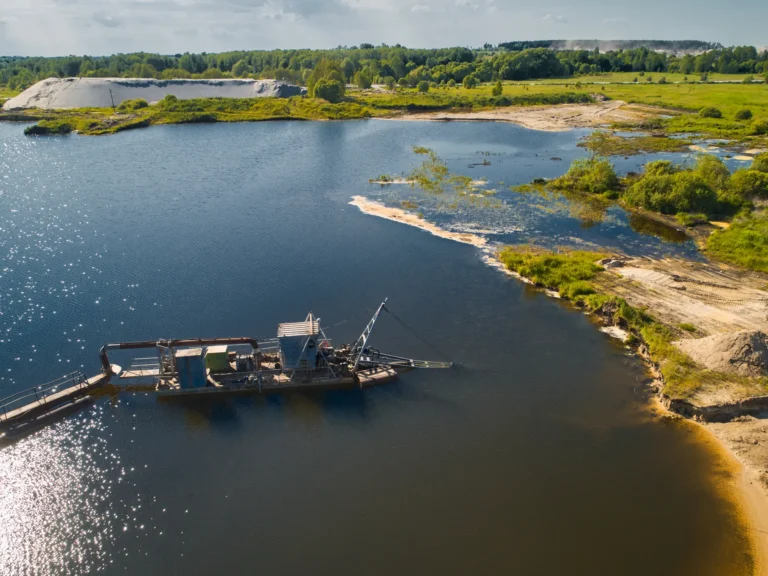Lakes are invaluable natural resources that support biodiversity, provide drinking water, and offer recreational opportunities. However, sediment buildup, pollution, and organic debris can threaten their ecological balance, making lake restoration and maintenance increasingly important. One of the most effective ways to address these issues is to dredge a lake.
Dredging a lake involves the removal of accumulated sediment and debris from the lakebed to restore depth, improve water quality, and rejuvenate aquatic ecosystems. This process is crucial for maintaining the health of lakes impacted by excessive sedimentation, which can lead to reduced water storage capacity, deteriorating habitats, and poor water clarity. To effectively dredge a lake, careful planning and the use of appropriate techniques are essential to address specific sediment and environmental challenges. When you dredge a lake, you not only restore its natural balance but also ensure its long-term sustainability and functionality for both ecological and human benefits.
Various methods, such as mechanical and hydraulic dredging, are used to restore lakes. Each approach has unique benefits depending on the size of the lake and the sediment composition. Lake dredging enhances the ecological health of water bodies and provides long-term benefits, such as flood prevention, improved aesthetics, and increased recreational potential. With the right strategy, the decision to dredge a lake can significantly improve its functionality and overall sustainability.
Why Dredging a Lake is Important
Lakes are vital ecosystems that provide numerous ecological, recreational, and economic benefits. They support diverse aquatic habitats, act as reservoirs for drinking water, and attract tourism and recreation activities. However, sediment buildup over time can compromise the health and functionality of these water bodies, necessitating the need to dredge a lake.
Sediment accumulation in lakes is a natural process but can accelerate due to factors such as erosion, agricultural runoff, and urban development. This buildup reduces the lake’s depth, leading to a range of issues. Shallower lakes are more susceptible to temperature fluctuations, which can disrupt aquatic habitats and harm fish populations. Additionally, excess sediment often contains nutrients like phosphorus, which can trigger harmful algal blooms, reducing water quality and threatening biodiversity.
Lake dredging is a critical solution to these problems, offering a comprehensive approach to restoring and maintaining the health of lakes. By removing accumulated sediment and debris from the lakebed, lake dredging helps to restore the lake’s original depth, improve water clarity, and rejuvenate aquatic habitats. This process not only enhances the lake’s ecological balance but also increases its water storage capacity, making it more effective at managing stormwater runoff and reducing the risk of flooding. When you dredge a lake, you address sedimentation issues that threaten aquatic ecosystems and water quality. Moreover, the decision to dredge a lake ensures the preservation of its ecological and functional value for future generations.
Furthermore, efforts to dredge for lake restoration have long-term economic advantages. Healthier lakes attract more recreational users, boosting local economies through increased tourism and property values. Regular lake dredging not only revitalizes these important water bodies but also ensures they continue to serve communities and ecosystems effectively for generations to come.
Methods to Dredge a Lake
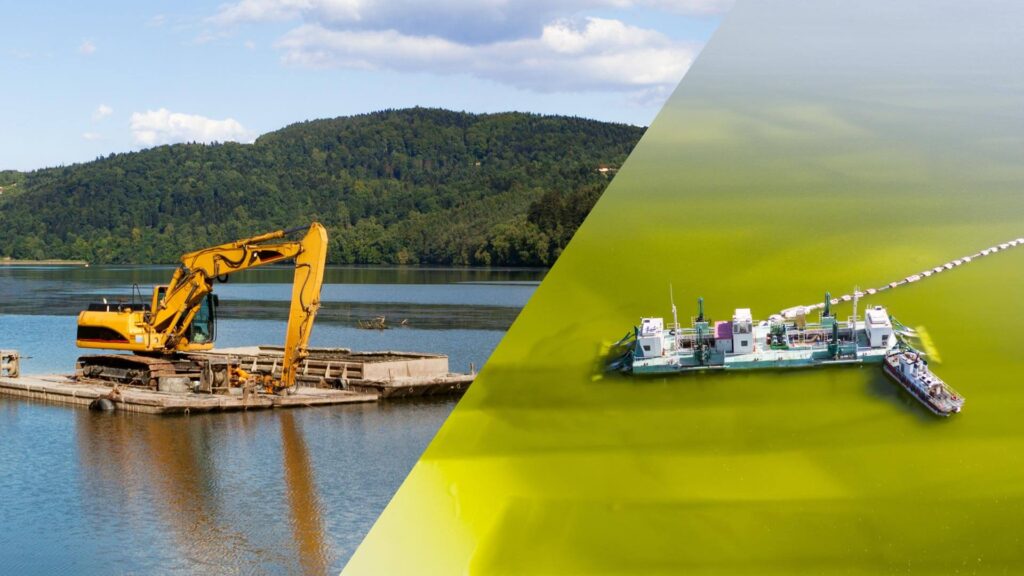
Dredging a lake involves various techniques tailored to the lake’s size, sediment type, and project objectives. Two primary approaches are mechanical and hydraulic dredging, each with unique advantages and applications.
Mechanical dredging involves physically removing sediment using excavators, clamshell buckets, or draglines. This method is ideal for small—to medium-sized lakes or areas with compacted sediment. It allows for precise sediment removal, making it effective for projects requiring specific outcomes, such as habitat restoration or targeted sediment removal. However, it can be slower and may temporarily disturb the surrounding environment.
Hydraulic dredging, on the other hand, uses suction to extract sediment and transport it through pipelines. This technique is particularly effective for larger lakes or projects requiring the removal of significant sediment volumes. Equipment like cutter suction dredgers and hopper dredgers is commonly used to dredge a lake hydraulically. These machines are efficient and minimize disruption to the lake’s shoreline. However, hydraulic dredging often requires additional infrastructure, such as sediment storage or dewatering facilities.
Choosing the right equipment to dredge a lake depends on various factors, such as the type of sediment, the size of the lake, and the specific goals of the project. For instance, suction dredgers are ideal for removing soft, loose sediment, providing efficient sediment removal with minimal environmental impact. On the other hand, cutter dredgers are better suited for compacted or rocky materials, making them effective for projects that require more intensive sediment removal.
When planning to dredge for lake restoration, it’s essential to weigh the pros and cons of different dredging methods. Mechanical dredging offers precise sediment removal, making it suitable for targeted restoration efforts or small-scale projects. Conversely, hydraulic dredging is more efficient for large-scale operations, as it can handle significant sediment volumes quickly. The decision to dredge a lake using a specific method should align with the lake’s unique needs and ecological conditions.
Ultimately, selecting the right equipment and method ensures sustainable and effective outcomes when undertaking a project to dredge for lake restoration. By carefully considering these factors, stakeholders can achieve long-term benefits for the lake’s ecosystem and the surrounding area.
Benefits of Lake Dredging
Lake dredging offers a range of benefits that enhance the ecological health and economic value of lakes. Over time, sediment buildup can compromise a lake’s functionality and aesthetic appeal, but efforts to dredge a lake can effectively address these issues.
One primary benefit of lake dredging is improved water quality and ecosystem health. When you dredge a lake, the removal of sediment containing excess nutrients, such as phosphorus, helps prevent harmful algal blooms that degrade water quality and disrupt aquatic habitats. By restoring the lakebed, lake dredging also fosters a healthier environment for fish and other aquatic species, promoting biodiversity and improving the overall balance of the ecosystem.
Dredge efforts for lake restoration offer ecological benefits and enhance recreational opportunities and aesthetic appeal. Clean, clear lakes attract visitors for activities such as swimming, fishing, and boating, offering a more enjoyable experience for locals and tourists alike. When communities dredge a lake, they not only improve its functionality but also create a vibrant focal point for outdoor activities. These improvements help boost local pride and foster a stronger connection between communities and their natural surroundings.
Additionally, dredging for lake restoration helps prevent flooding by increasing the waterbody’s capacity to store runoff during heavy rains. By restoring the lake’s depth, dredging reduces the risk of overflow and mitigates the potential for property damage.
Economically, the decision to dredge a lake provides long-term benefits. Clean and functional lakes raise surrounding property values and attract tourism, which can significantly contribute to local economies. Dredging for lake maintenance ensures that these water bodies remain valuable resources for recreation, wildlife, and commerce, supporting communities and ecosystems for future generations.
Key Considerations Before Starting a Dredging Project
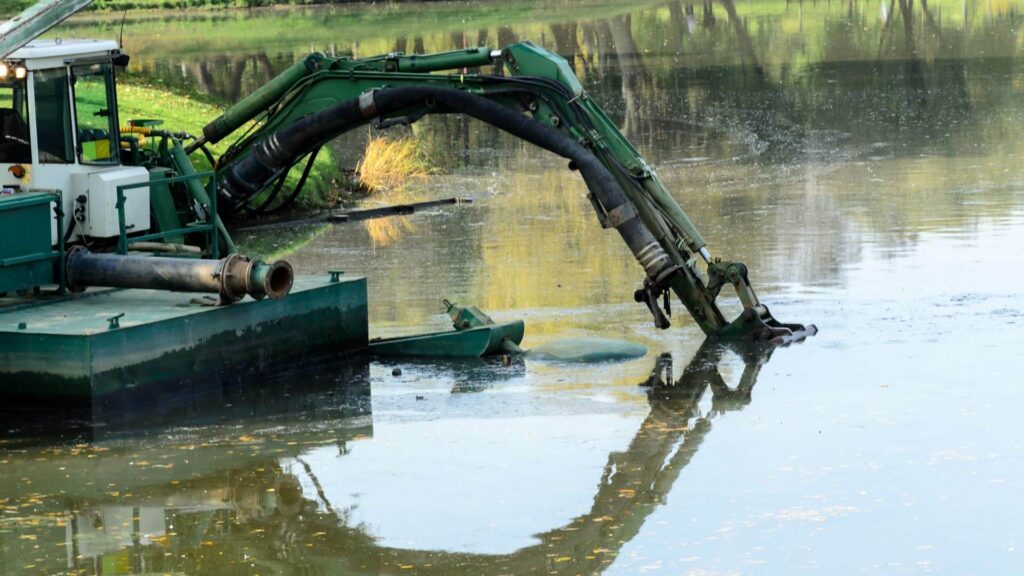
Several critical factors must be considered before beginning a lake dredging project to ensure its success and sustainability. From environmental assessments to regulatory compliance, careful planning is essential for balancing ecological preservation and community needs. Addressing these considerations is vital to achieving long-term benefits without causing unnecessary harm to the environment.
One of the first steps when you dredge a lake is conducting a thorough environmental impact assessment. This process evaluates how dredging activities might affect aquatic habitats, water quality, and local wildlife. It helps identify potential risks and provides insights into how to dredge for lake restoration in an environmentally responsible way. Understanding these implications is crucial for designing strategies that minimize disruption and implement sustainable practices. By prioritizing such planning efforts, projects to dredge for lake maintenance can successfully balance ecological health with the needs of surrounding communities.
Permitting and regulatory compliance are equally vital when planning to dredge a lake. Laws governing dredging for lake restoration vary by region, and obtaining the necessary permits often involves demonstrating that the project will not harm sensitive ecosystems. Regulatory oversight ensures that dredging activities are conducted responsibly and sustainably. Compliance with these regulations is essential not only to protect the environment but also to prevent costly delays or legal challenges that could jeopardize the project’s success. For those planning to dredge for lake improvement, adhering to these requirements should be a top priority.
Cost considerations are another critical factor. Lake dredging projects can be expensive, with costs depending on the size of the lake, sediment type, and dredging method used. For communities aiming to dredge a lake, exploring funding options is key to reducing financial burdens. Government grants, environmental funding programs, and private partnerships are viable options to secure the necessary resources. These funding avenues can help ensure the project’s feasibility while supporting its long-term success. By carefully evaluating costs and compliance needs, stakeholders can effectively dredge for lake restoration, ensuring sustainable benefits for the environment and local communities.
Community involvement and stakeholder engagement are crucial to the success of any effort to dredge for lake restoration. Residents, environmental groups, and other stakeholders should be included in the planning process to address concerns, foster support, and align the project with community priorities. Transparent communication builds trust and ensures that the project meets ecological and social needs.
Addressing these key considerations can help a lake dredging project effectively achieve its goals while promoting sustainability, community involvement, and long-term benefits for the environment and local population.
How to Plan a Successful Lake Dredging Project
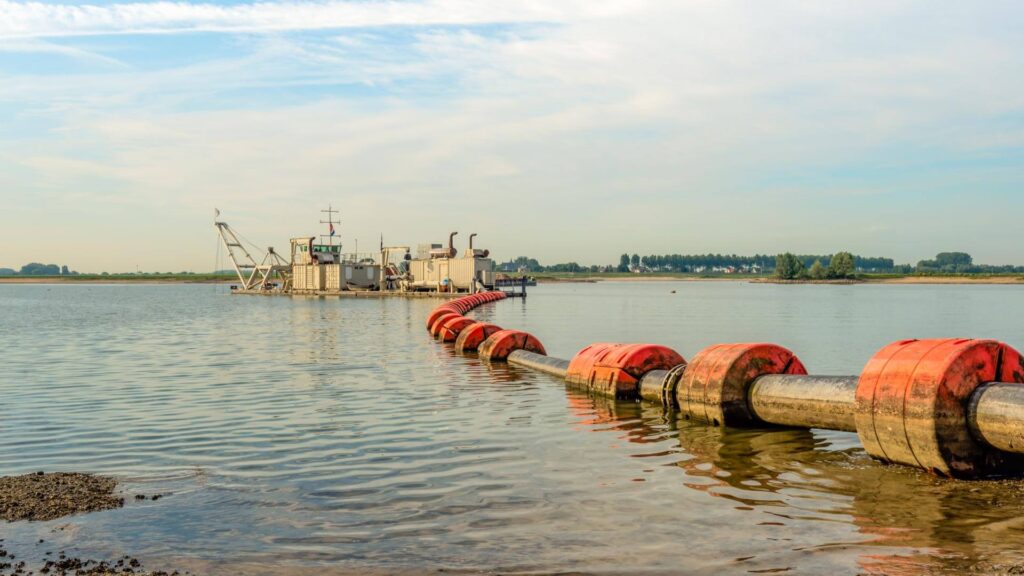
Planning a lake dredging project requires careful evaluation, strategic decision-making, and thorough preparation to ensure its success. By following a systematic approach, stakeholders can achieve both environmental and economic benefits while minimizing challenges during implementation.
The first step in planning to dredge a lake is identifying clear objectives and assessing the lake’s current condition. Understanding why the dredging is necessary—whether to improve water quality, enhance recreational access, or prevent flooding—is crucial for defining project goals. A detailed evaluation of the lake’s sediment composition, depth, and ecological state helps determine the scope of the project and the most effective methods to achieve these goals.
Selecting the right equipment and contractor is another vital component of a successful lake dredging project. Depending on the project’s requirements, different types of dredging equipment are available. For example, suction dredgers are ideal for removing soft sediment, while cutter dredgers are better suited for compacted materials. Choosing a contractor experienced in lake dredging ensures that the project is handled efficiently and adheres to environmental and regulatory standards. Contractors should also provide detailed plans for managing dredged material, which can include storage, dewatering, or repurposing for habitat restoration.
Setting realistic timelines and milestones is critical for keeping the project on track. A well-defined schedule allows sufficient time to address permitting processes, stakeholder consultations, and unforeseen challenges. The plan must also be flexible enough to account for weather conditions, technical issues, or community concerns that may arise during the project.
Whether the goal is to restore aquatic ecosystems, increase water storage capacity, or enhance recreational opportunities, a carefully planned approach to dredging a lake is essential for success. By leveraging the right equipment and expertise, lake dredging projects can achieve sustainable and lasting benefits, ensuring the lake continues to serve its ecological and social functions for years to come.
Conclusion
Lakes are essential natural resources that offer ecological, recreational, and economic benefits. However, sediment buildup, pollution, and habitat degradation can diminish their functionality and beauty over time. Dredging a lake is vital for restoring and maintaining these valuable ecosystems. By removing accumulated sediment and debris, lake dredging helps rejuvenate aquatic environments, improve water quality, and prevent flooding.
Sustainable lake dredging projects are critical for preserving these ecosystems while supporting the needs of communities that depend on them. By implementing eco-friendly practices and leveraging modern technologies, stakeholders can ensure that the process minimizes environmental disruption and maximizes long-term benefits. Whether the goal is to enhance biodiversity, boost recreational use, or safeguard against flooding, the decision to dredge for lake maintenance must prioritize sustainability and community engagement.
The lasting impact of lake dredging extends beyond immediate improvements in water quality and aesthetics. Clean and well-maintained lakes provide habitats for diverse species, support recreational activities, and contribute to local economies through tourism and property value increases. Communities benefit from healthier ecosystems and enhanced quality of life, fostering a deeper connection to these natural spaces.
Sustainable dredging efforts must be prioritized to ensure the continued vitality of lakes. These efforts must balance ecological preservation with human needs for generations to come.
